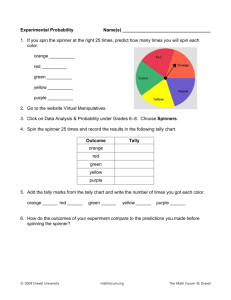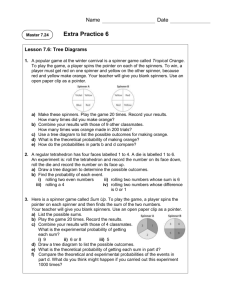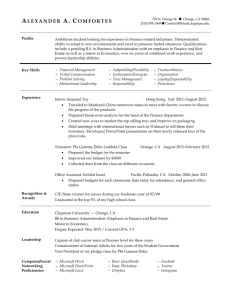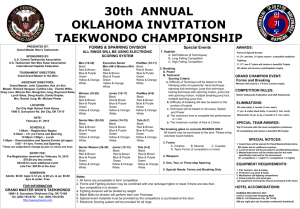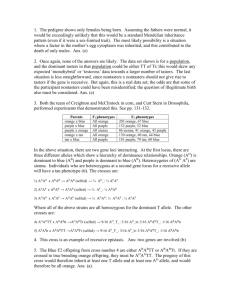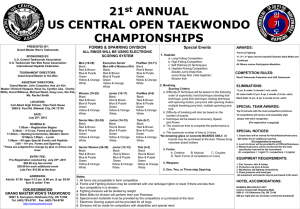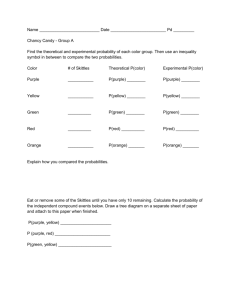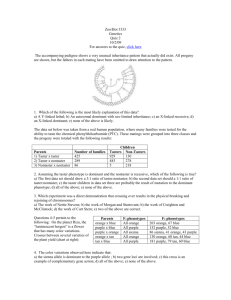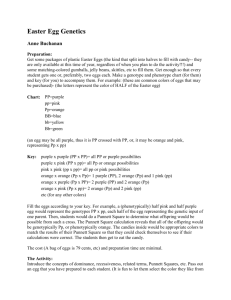E-Lesson day 8
advertisement
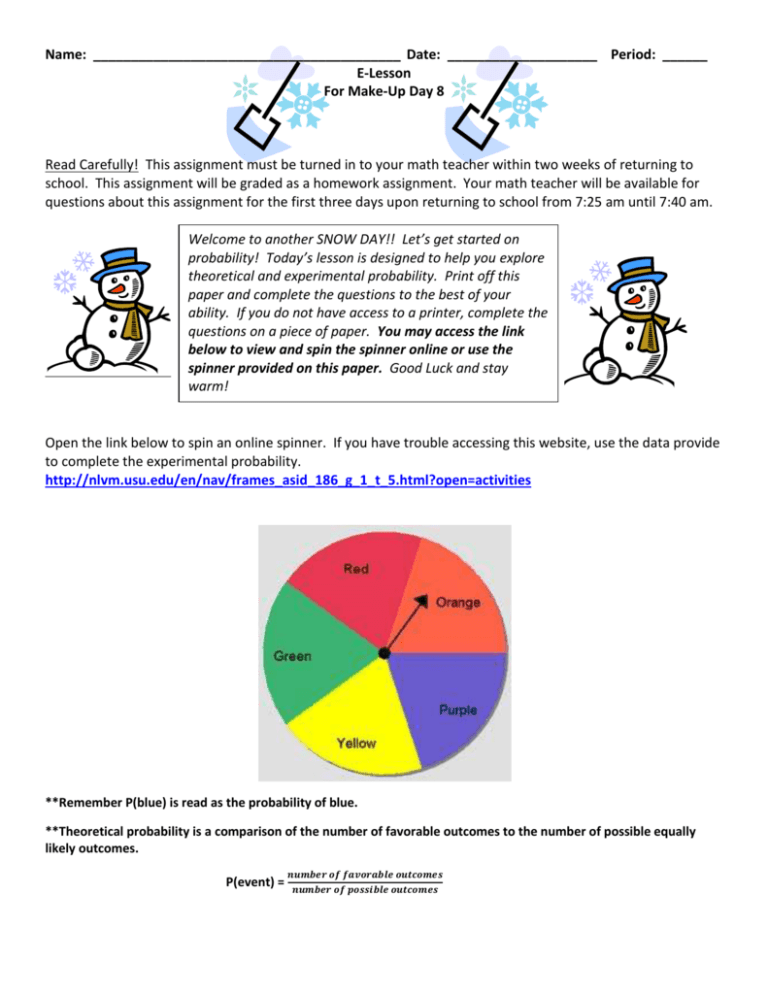
Name: _________________________________________ Date: ____________________ Period: ______ E-Lesson For Make-Up Day 8 Read Carefully! This assignment must be turned in to your math teacher within two weeks of returning to school. This assignment will be graded as a homework assignment. Your math teacher will be available for questions about this assignment for the first three days upon returning to school from 7:25 am until 7:40 am. Welcome to another SNOW DAY!! Let’s get started on probability! Today’s lesson is designed to help you explore theoretical and experimental probability. Print off this paper and complete the questions to the best of your ability. If you do not have access to a printer, complete the questions on a piece of paper. You may access the link below to view and spin the spinner online or use the spinner provided on this paper. Good Luck and stay warm! Open the link below to spin an online spinner. If you have trouble accessing this website, use the data provide to complete the experimental probability. http://nlvm.usu.edu/en/nav/frames_asid_186_g_1_t_5.html?open=activities **Remember P(blue) is read as the probability of blue. **Theoretical probability is a comparison of the number of favorable outcomes to the number of possible equally likely outcomes. P(event) = 𝒏𝒖𝒎𝒃𝒆𝒓 𝒐𝒇 𝒇𝒂𝒗𝒐𝒓𝒂𝒃𝒍𝒆 𝒐𝒖𝒕𝒄𝒐𝒎𝒆𝒔 𝒏𝒖𝒎𝒃𝒆𝒓 𝒐𝒇 𝒑𝒐𝒔𝒔𝒊𝒃𝒍𝒆 𝒐𝒖𝒕𝒄𝒐𝒎𝒆𝒔 1.) Using the spinner on the above website, or looking at the above spinner, list the theoretical probability for each color, if the spinner is spun 50 times. Be sure to simplify fractions to lowest terms! Color P(red) P(orange) P(purple) P(yellow) P(green) Theoretical Probability **Frequency means the number of times an event occurs. 2.) If you have access to the above website, spin the spinner 50 times and then organize your results in a frequency table. If the above website is not working, use the following data: A spinner is spun 50 times. The data for the 50 trials is listed below. red, purple, orange, yellow, red, yellow, green, purple, green, yellow, red, purple, orange, orange, orange, orange, purple, red, yellow, green, orange, red, green, red, yellow, green, green, red, orange, yellow, orange, red, purple, green, red, yellow, green, purple, purple, orange, yellow, purple, red, green, green, red, purple, orange, yellow, red Color Tally Mark Frequency Red Orange Purple Yellow Green **Experimental probability of an event is the ratio of the number of times the event occurs to the total number of trials. 3.) Calculate the experimental probability of each color. Write the experimental probability as a fraction, decimal, and percent. Color Experimental Probability Experimental Probability Experimental Probability (fraction) (decimal) (percent) Red Orange Purple Yellow Green 4.) Make a bar graph of your experimental probability outcomes. 5.) Write five sentences comparing the theoretical probability to the experimental probability.

